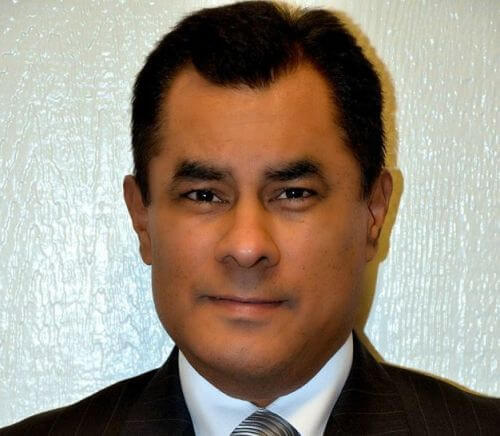BLOG VIEW: Now that Labor Day has passed, you can’t wear white and the NFL is front-page news again.
This year, the presidential election coverage engulfs the evening news and the Twitter-sphere. As part of that circus, many financial forecast triggers are in full swing based on this demarcation point. Post Labor Day presidential press conferences repeat countless election promises. The nation’s housing market is typically part of that conversation. On the surface, it appears that the national real estate market is in a much better position than in past elections.
However, for those in the real estate sector, Brexit fueled financing, with the rates staying at historic lows. That, in and of itself, helped mask a concern in the real estate industry. The nation’s debt issue has been on the back of everyone’s minds for years. Following the 2008 financial crisis, financial experts have been predicting another real estate bubble would burst. For those financial prognosticators, they have tabbed 2017-2018 as the forecast targets.
To put this in context, we need to look back to 1971. That year, the Pittsburgh Pirates won the World Series, the Baltimore Colts were the champions of the NFL, the first Starbucks opened in Seattle, and Fiddler on the Roof was at the top of the movie box office.
That, and Nixon ended international convertibility of the U.S. dollar to gold. That basically ended the Gold Standard. Truth be told, the U.S. has been in debt ever since. Debt has manifested in everything from trade deficits, government deficits, un-funded entitlements and private debt.
Credit cards and student debt are at the top of that list. According to the American Bankruptcy Institute, personal bankruptcies are on a moderate decline but remain at a steady clip with 202,334 filings in the second quarter. Needless to say, the nation’s collective debt has grown two-and-a-half times the GDP since 1971. The main question we must all ask ourselves is, how is this sustainable? The truth is, it isn’t!
In addition to our own debt issues, and Brexit, there’s just a lot of weirdness going on worldwide. China’s trade issues and currency manipulation is having an international economic impact. Australia’s economic woes are concerning world markets. The Greek economy is always in flux – and impacting Germany to some extent. Venezuela is a mess, and who really knows what’s going on with the Russian economy. Although financial experts remain positive, they still expect a recession at some level by the end of 2017. The bottom line, domestically, is to keep an eye on interest rates and where they’re headed. For now, rates remain low – and as that remains the status quo, the housing industry should remain relatively stable.
The banking industry maintains that mortgage applications remain at a good pace. Global uncertainty may also lead to some overseas investors turning to U.S. real estate as an investment source. The more volatility that goes on in foreign markets – and the more uncertainty there is about geopolitical risks in foreign markets – investors go to what looks stable. For now, that’s U.S. investments, which include real estate.
Domestically, flipping houses is back in style. Cable TV shows and little homes sparked interest once the economy came out of its post Lehman Brothers funk. The stock market keeps hitting record highs. The record-low interest rates help most new home buyers. Despite what happened a few years ago, many investors have the mindset that the housing boom is back. Shows like Flipping Vegas, the Vanilla Ice Project, Property Ladder, Flip This House or Flip That House are leading more and more investors toward the lucrative world of flipping.
Like most things in life, if something is too good to be true, chances are it is. If, by chance, it is true, there’s a window. With that in mind, what’s concerning those who invest in U.S. real estate is that we could be on the verge of a real estate bubble burst that could be as destructive as the Lehman Brothers meltdown. Nationally, housing prices are 25% to 60% higher than what the market can support. Truthfully, the bottom could fall out from under us at any moment. Those who acquired real estate thinking they were getting a deal could be on the short end of the proverbial stick.
Ask speculators who experienced the Lehman meltdown and they will tell you that there are certain signs they wish they hadn’t missed. Knowing home prices are the same – and up to 20% higher than during that time period (depending on the region) – gives them reason for concern.
Common sense tells us that this may be the sign of another bubble. Then again, we thought we had common sense back in 2007.
What’s troubling is that domestic family income is 5% to 10% less than it was back then. Despite recent improvements in income, this facet of the economy remains fluid. The median household income in the U.S. was $57,936 in 2007 and $53,657 in 2014, according to a Census ACS survey. It’s evident that income is lower, but housing prices are higher than back in 2007. The average home cost $247,900, nationally, in 2007. That same home costs you $278,800, as of January, according to the U.S. Census Bureau. The average new home in the U.S. will cost you $365,700, as of January.
In the end, with stagnant income levels, and a potential for higher rates down the road, the pool of qualified borrowers will continue to shrink. This, coupled with tighter underwriting guidelines with the government-sponsored enterprises, is another reason the housing market could find itself in another meltdown.
The challenge for the housing industry is keeping the purchase money and refinance applications coming in. It’s difficult, at best, to forecast exactly how long the interest rate gravy train will keep chugging along.
Brass tacks tell us that once the gravy train comes to a halt, and reverses course, it may be the recipe for deja vu all over again. Blame it on Rio, Brexit, China, Australia, Greece, Venezuela, Russia, a new president, or what or whomever you want. The gospel, according to Newton, says that no matter who one blames, once it happens, we won’t be able to limit the impact of another bubble burst.
The question is not if it will happen – it’s when. Will 2017 or 2018 be the year for Lehman, the sequel? Who knows? Until those rates start to tick back up, keep calm and carry on.
Jimmy Alvarez is director of risk management for Financial Asset Services Inc., a national asset management company specializing in providing asset management, property disposition and valuation services to mortgage companies and financial institutions.
(Do you have an opinion to share with MortgageOrb? Get in touch! Send an email to pbarnard@zackin.com.)














